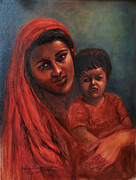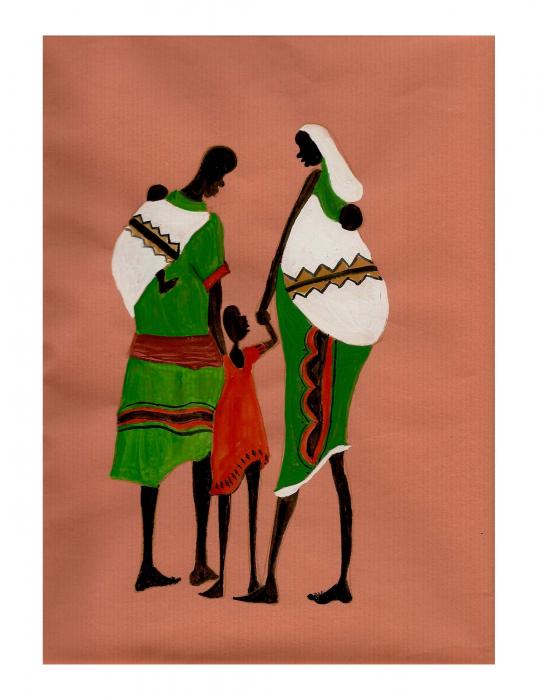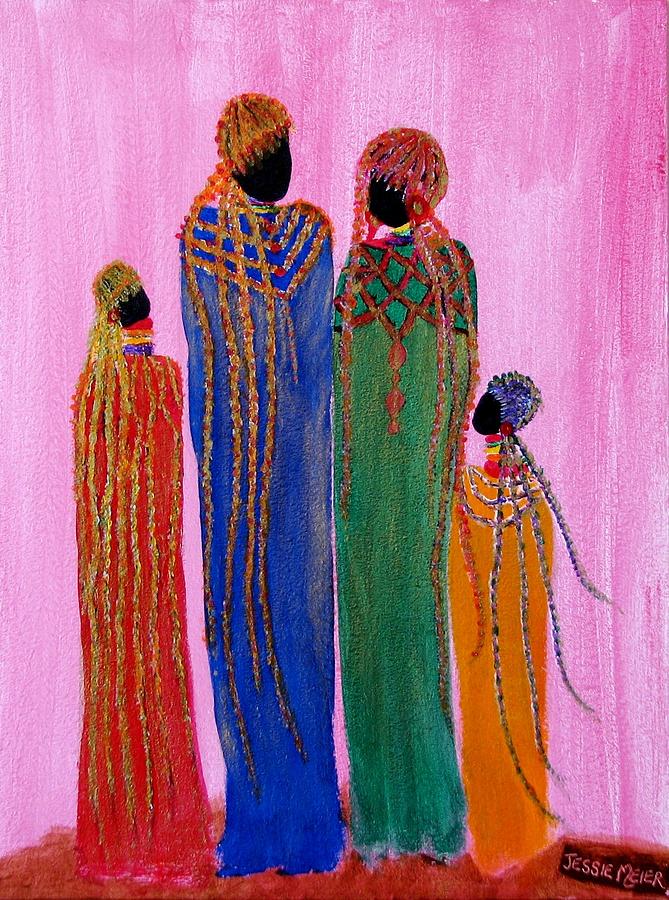Written By: Allison Swenson and Elisa Johnson
Grade:2Time needed:45 min.
Objective:Students will understand how art can be a tool for teaching by seeing instrumentalist art samples, analyzing the lessons taught in some books that use art, and creating their own work of art that will convey a lesson using found objects.
State Standards:
- Mathematics: Students will acquire number sense with whole numbers and fractions and perform operations with whole numbers.
- Language Arts: Develop and use skills to communicate ideas, information, and feelings.
National Standards:
- Fine Arts: Making connections between art and other disciplines.
- Fine Arts: Students identify connections between the visual arts and other disciplines in the curriculum.
- Language Arts: Students present information, concepts, and ideas to an audience of listeners or readers on a variety of topics.
- PowerPoint or other method to display pictures
- Caldecott award winner books
- Paper
- Glue
- Found objects (some from outside, or from sample box, in backpacks…)
1) Explain/Discuss Instrumentalist Theory
Art is used to teach lessons, morals, or about historical events and injustices
QUESTION: How do you think art can teach? Can you think of some examples?
2) Show Examples of Instrumentalist Art
(Eugene Delacroix, Francisco Goya, Norman Rockwell, Frank Lloyd Wright etc.)
Note: Check with your school’s administrators and parents to see if some of these images would be allowed to be displayed.

Algerian Women in Their Apartments, by Eugene Delacroix. One of the messages of this painting can be colonialism and slavery. Algeria was occupied by France in the 1830s.

The Shootings of May 3, 1808 by Francisco Goya. This painting represents the events that took place in Spain in 1808 when Napoleon sent his troops to Spain with the pretense to help conquer Portugal. His objective was the throne of Spain, and Spaniards revolted. In the picture, French soldiers retaliate, but by 1814, the French had been thrown out of Spain.

The Problem We All Live With, by Norman Rockwell. The story of Ruby Bridges and the court-ordered mandate to have integration in schools on Nov. 14, 1960.

Peter Pumpkin Eater, by Maxfield Parrish. Learning Mother Goose rhymes.
3) Activity with Caldecott books
- Introduction: The Caldecott Medal was named in honor of nineteenth-century English illustrator Randolph Caldecott. It is awarded annually by the Association for Library Service to Children, a division of the American Library Association, to the artist of the most distinguished American picture book for children.
- Activity: Students will work in small group and each will be given a Caldecott medal book. These books use beautiful art and teach lessons. Students are asked to read the books and then share with the class what they think the lessons in them are. They don’t all have to be academic lessons. Students may find teachings about imagination, creativity, self-concept…
Caldecott books used for this activity:
- Jumanji, by Chris Van Allsburg
- Where the Wild Things Are, by Maurice Sendak
- Abraham Lincoln, by Ingri d’Aulaire and Edgar Parin
- Rapunzel, by Paul Zelinsky
- The Lion and the Mouse by Jerry Pinkney
- Snowflake Bentley, illustrated by Mary Azarian; text by Karen Ackerman.
- Fables, by Arnold Lobel
- Why Mosquitos Buz in People’s Ears: a West African Tale, illustrated by Leo and Diane Dillon; text by Varna Aardema.
4) Read Aloud and Highlight The Selfish Giant, by Oscar Wilde.

- Discuss with the Students how the pictures contribute to the overall message of the story
- What kind of lessons, messages, or historical truths are taught through the pictures?
- How could we teach these lessons in a different way?

- Introduce El Anatsui
- Show pictures in the story Raaalph!
- Explain the concepts in 12 Ways to Get to 11
- Watch video clips of the Artist. http://www.pbs.org/art21/artists/el-anatsui
- How do the found objects help teach the lesson in El Anatsui’s art?
- What lesson is El Anatsui trying to teach?
- Does the process of hiring college students and reusing bottle caps influence the message that is conveyed?
6) Show a prototype of Found Object Art
- Teach and exemplify the process
- Select 11 objects using a combination of at least three different objects. These will be the media. Discuss why certain objects were used. Fill out the worksheet (seen below) as you select your items.
- Select a ground. Any paper or surface can work. Discuss what messages can be sent by using different grounds.
- Find support to use while making the artwork and for displaying it. Any support will work. Choose one that helps teach the lesson you want to convey.
- Arrange the objects to teach a lesson from The Selfish Giant.
- Find a way to display the artwork.
- My Prototype
- To select my objects, I decided to use all natural items found outside to further the feel of a “garden” and to convey feelings of life and growth. I chose: 1 Pinecone, 1 Burr, 1 Stick, 4 long strands of grass, 4 Maple “Helicopters.” 11 items in all.

- For my ground, I chose a blank sheet of white paper to keep it simple and childlike.
- For my support, I used a table to help me arrange the objects, and as part of the process I didn't glue the objects on, but photographed them and displayed the picture digitally through a PowerPoint Projection.
- Next, I explained why I chose the objects and arranged them as I did.
6) Handout the worksheet and take the students on a walk to collect their objects. Allow them to assemble, glue, photograph, etc. in class. Use The Selfish Giant as a springboard for the message of their artwork.
- How could you use found objects to tell a story or teach a lesson from The Selfish Giant. For a second grader, you could be more specific and ask, “If you were to play in the Giant’s garden, what kinds of things would you do? What would it look like?”
- You have to use at least 3 different kinds of found objects
- All the objects have to equal a total of 11.
- Any combination of at least three kinds of objects is possible, as long as the result is still 11.
Name: _____
12 Ways to Make 11
| Object |
How many? |
Why did you choose this object? / What will you make with it? |
| Total Count: Does it equal 11? |
______ |
7) Assessment
- Each student will write a paragraph about what their picture is about and share it with the class. They will also show the handout they used in collecting the 11 objects and explain why they chose those particular objects as media.
- Questions to consider when assessing students' work
- Is there a lesson conveyed in their picture and written paragraph?
- What aspect of the book "The Selfish Giant" inspire you to create your work?
- Are there any other lessons you could have highlighted?
- Do you think you learn better when asked to convey meaning through art?
- Was this an enjoyable experience for you?
8) Photography adaption
- Let the students create their found object art and photograph it. Give them five minutes to change the scene and take another photograph. Do this several times and allow the students to use their scenes to write their own story. These could be bound into books and show to parents.







